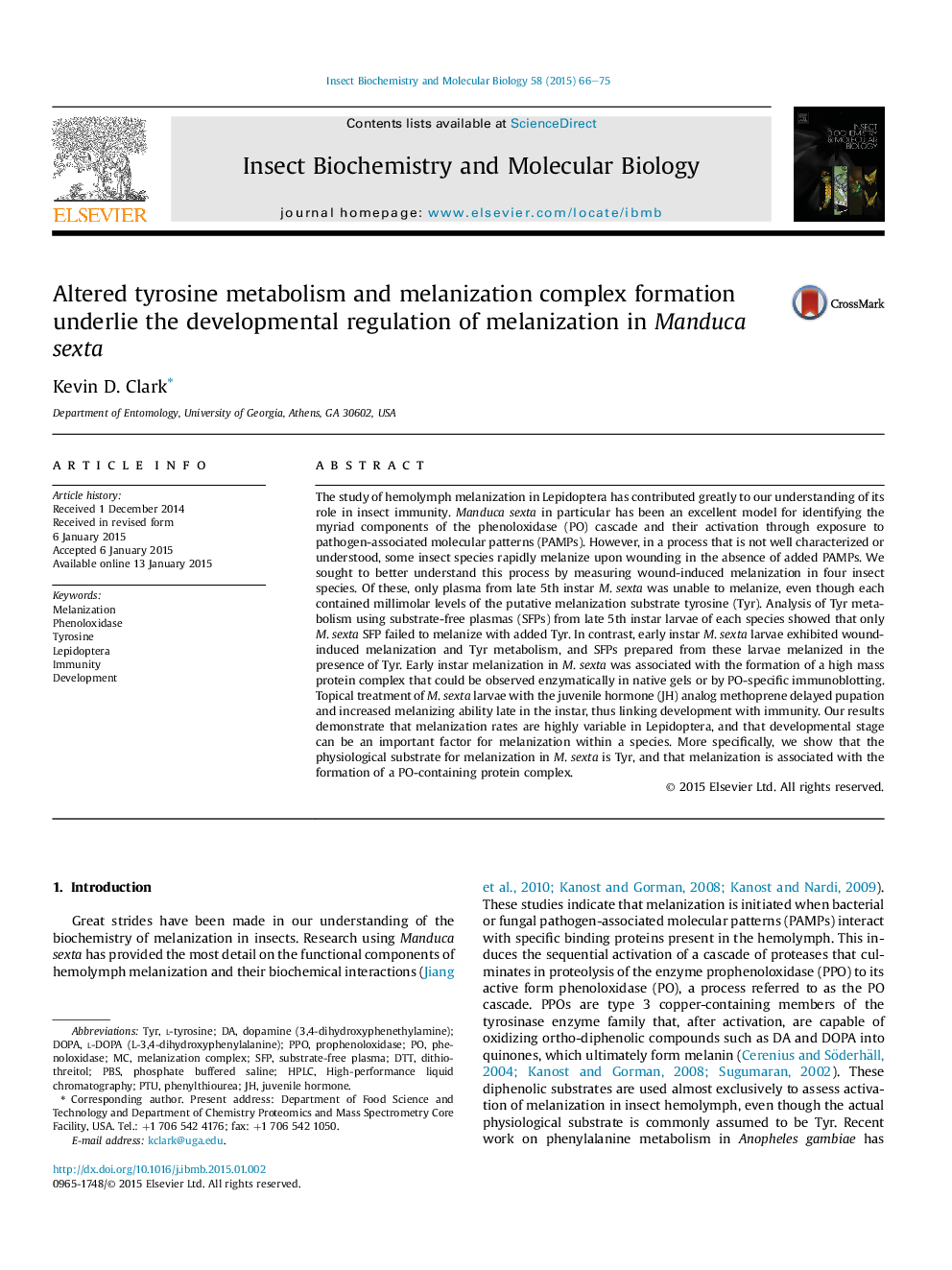| کد مقاله | کد نشریه | سال انتشار | مقاله انگلیسی | نسخه تمام متن |
|---|---|---|---|---|
| 1982053 | 1539494 | 2015 | 10 صفحه PDF | دانلود رایگان |

• Wounding induces highly variable melanization in numerous insect species.
• Development strongly affects wound-induced melanization rates in Manduca sexta.
• Tyr is the physiological substrate for melanization in M. sexta.
• M. sexta phenoloxidase (PO) by itself is a physiologically inactive enzyme.
• PO is activated by incorporation into a high mass Melanization Complex.
The study of hemolymph melanization in Lepidoptera has contributed greatly to our understanding of its role in insect immunity. Manduca sexta in particular has been an excellent model for identifying the myriad components of the phenoloxidase (PO) cascade and their activation through exposure to pathogen-associated molecular patterns (PAMPs). However, in a process that is not well characterized or understood, some insect species rapidly melanize upon wounding in the absence of added PAMPs. We sought to better understand this process by measuring wound-induced melanization in four insect species. Of these, only plasma from late 5th instar M. sexta was unable to melanize, even though each contained millimolar levels of the putative melanization substrate tyrosine (Tyr). Analysis of Tyr metabolism using substrate-free plasmas (SFPs) from late 5th instar larvae of each species showed that only M. sexta SFP failed to melanize with added Tyr. In contrast, early instar M. sexta larvae exhibited wound-induced melanization and Tyr metabolism, and SFPs prepared from these larvae melanized in the presence of Tyr. Early instar melanization in M. sexta was associated with the formation of a high mass protein complex that could be observed enzymatically in native gels or by PO-specific immunoblotting. Topical treatment of M. sexta larvae with the juvenile hormone (JH) analog methoprene delayed pupation and increased melanizing ability late in the instar, thus linking development with immunity. Our results demonstrate that melanization rates are highly variable in Lepidoptera, and that developmental stage can be an important factor for melanization within a species. More specifically, we show that the physiological substrate for melanization in M. sexta is Tyr, and that melanization is associated with the formation of a PO-containing protein complex.
Figure optionsDownload high-quality image (179 K)Download as PowerPoint slide
Journal: Insect Biochemistry and Molecular Biology - Volume 58, March 2015, Pages 66–75